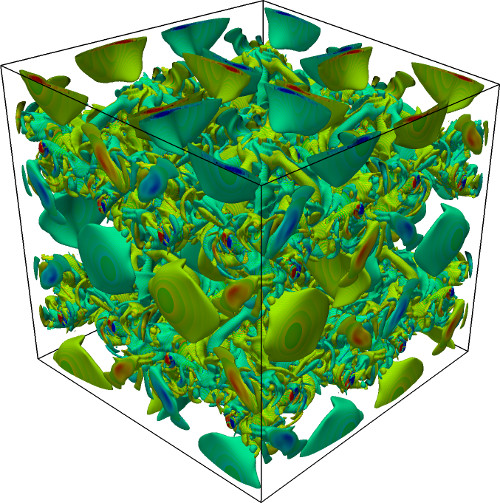
Taylor-Green vortex
A three-dimensional simulation that solves the compressible Navier-Stokes equations. This demonstrates vortex stretching and turbulence in a triply-periodic domain.
Here are a few applications that OpenSBLI has been used for:

A three-dimensional simulation that solves the compressible Navier-Stokes equations. This demonstrates vortex stretching and turbulence in a triply-periodic domain.
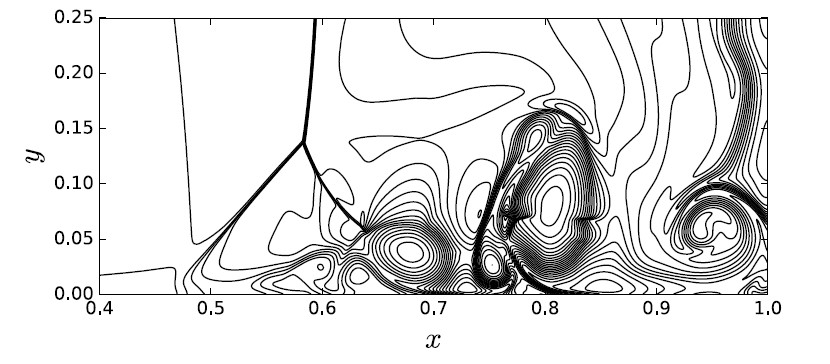
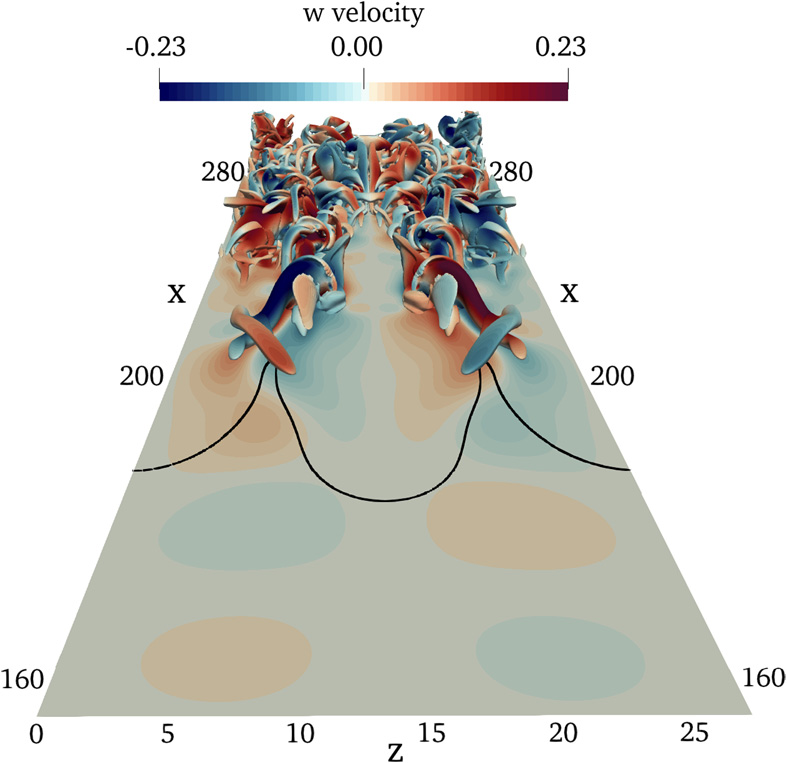
Breakdown to turbulence following an oblique shock interation with a laminar boundary layer. The simulation includes laminar separation, shear layer instability and breakdown to turbulence (Lusher et al, 2021).
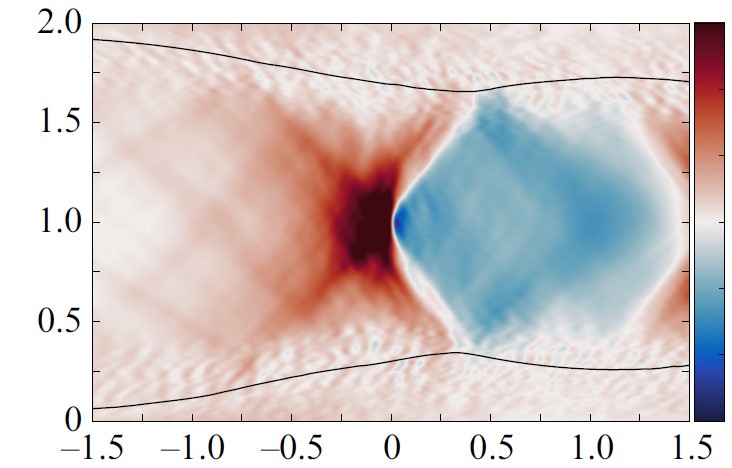
Image of one cell of a shock train in a rectantular duct, showing streamwise density gradient contours. The simulations used a sixth order TENO scheme and included turbulent inflow and an outflow sponge zone to impose a back pressure (Gillespie and Sanddham, 2023).
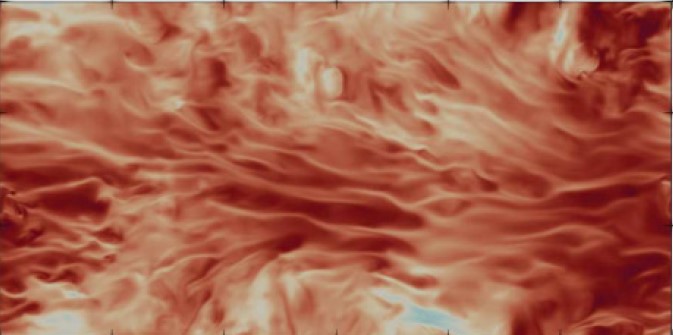
A counter-flow channel configuration is used to study the effect of Reynolds and Mach numbers on mixing, including shocklets at high Mach number. The image of the streamise velocity near the wall shows high levels of spatial intermittency (Hamzehloo et al, 2021).